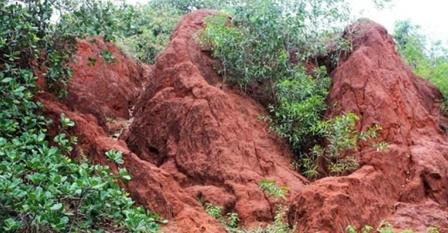A Look At India's 7 Natural Heritage Locations, Picked Up As UNESCO's World Heritage Sites
With these additions, the country's count in the tentative list has risen from 62 to 69 properties. The Ministry of Culture informed that after this inclusion, India now has 49 cultural, 17 natural, and three mixed heritage properties listed on the UNESCO list.
The newly listed sites include the Deccan Traps at Panchgani and Mahabaleshwar in Maharashtra, the geological heritage of St Mary's Island in Karnataka, Meghalayan Age caves, Naga Hill Ophiolite in Nagaland, Erra Matti Dibbalu in Andhra Pradesh, the natural heritage of Tirumala Hills in Andhra Pradesh and the Varkala Cliffs in Kerala.
Notably, the inclusion in the tentative list is a precursor to its nomination in the prestigious World Heritage List.
“The addition of the new sites to the UNESCO list reaffirms India's unwavering commitment to preserving and promoting its extraordinary natural and cultural legacy,” said a government statement.
Notably, India recently hosted the 46th Session of the World Heritage Committee in New Delhi in July 2024, which saw the participation of more than 2,000 delegates from over 140 countries.
Brief details of India's seven picturesque locations:
Deccan Traps at Panchgani and Mahabaleshwar, Maharashtra
They are home to some of the best-preserved and among the world's most studied lava flows. These volcanic formations lie within the Koyna Wildlife Sanctuary, already a UNESCO World Heritage site, thereby showcasing India's geological marvels.
St Mary's Island Cluster, Karnataka
These island clusters are famous for striking columnar basalt formations and date back to 85 million years to the Late Cretaceous period, making them a rare geological treasure.
Meghalayan Age Caves, Meghalaya
The spectacular cave systems named Mawmluh Cave serve as the global reference point for the Meghalayan Age, reflecting key climate and geological shifts.
Naga Hill Ophiolite, Nagaland
These unique hills offer clear and detailed insight into plate tectonics, ocean ridge dynamics, and Earth's deep geological past.
Tirumala hills, Andhra Pradesh
The famed Tirumala hills are home to Silathoranam natural arch and the Eparchaean Unconformity. They represent rare geological formations, depicting 1.5 billion years of Earth's history.

Legal Disclaimer:
MENAFN provides the
information “as is” without warranty of any kind. We do not accept
any responsibility or liability for the accuracy, content, images,
videos, licenses, completeness, legality, or reliability of the information
contained in this article. If you have any complaints or copyright
issues related to this article, kindly contact the provider above.
Most popular stories
Market Research

- Jpmorgan Product Head Joins GSR Trading MD To Build Institutional Staking Markets
- Kintsu Launches Shype On Hyperliquid
- R0AR Launches Buyback Vault: Bringing 1R0R To R0AR Chain Unlocks New Incentives
- Excellion Finance Scales Market-Neutral Defi Strategies With Fordefi's MPC Wallet
- Ethereum-Based Meme Project Pepeto ($PEPETO) Surges Past $6.5M In Presale
- Falcon Finance Unveils $FF Governance Token In Updated Whitepaper





















Comments
No comment